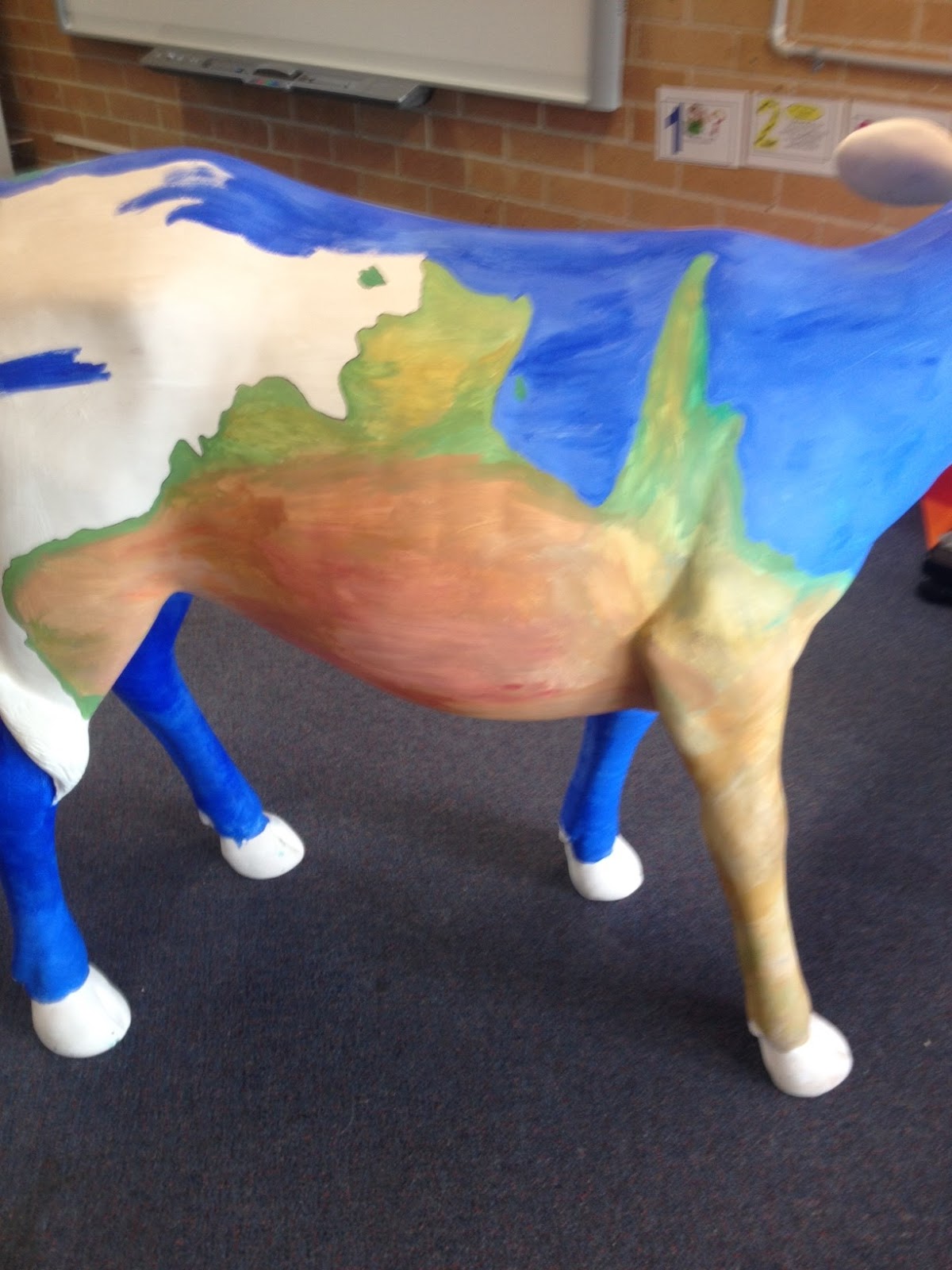As part of our Archibull project we are trying to educate our school community about the dairy industry. We are hoping that the staff and students will use their new knowledge to make changes that matter in our community.
Now we all love a bargain, but as consumers it is our responsibility to ask what is the cost of this bargain to the producer. After the deregulation of the dairy industry major supermarkets dropped the price of milk and engaged in a pricing war in an attempt to attract more customers. This has resulted in farmers receiving a very low price for their product, as low as 12c a litre.
Our staff have a communal coffee and tea fund which supplies milk for the staff to have with their coffee or tea. We have in the past purchased milk from major supermarkets at a reduced cost. After some research into the low cost of milk and the effect on farmers Mrs Harris decided that a small change could be made by buying local or dairy farmers milk.
At the weekly staff meeting Mrs Harris discussed with the staff the fact that cheap milk at the supermarket means lower prices for our farmers. After a lot of agreeing nods and platitudes the staff decided to support our local farmers by avoiding purchasing milk unlabeled milk from supermarkets in an effort to support our local farmers in obtaining fair prices for their product.
At the meeting it was also suggested that staff who purchase cheap supermarket milk support companies such as Pauls who purchase from farmers at fair prices at home. Every small step helps to make a difference.
I would like to challenge all our readers to think about the choices you make when purchasing milk and switch to Pauls milk (which is available in most supermarkets) in the near future.


